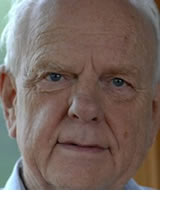About
In Memoriam: William R. Bennett, Jr.,
Jun 29, 2008
OSA Remembers Fellow Emeritus William R. Bennett, Jr.
 William R. Bennett, Jr., co-inventor of the first gas laser and an OSA Fellow Emeritus, died on June 29, 2008 of cancer of the esophagus at his home in Haverford, Pa. He was 78.
William R. Bennett, Jr., co-inventor of the first gas laser and an OSA Fellow Emeritus, died on June 29, 2008 of cancer of the esophagus at his home in Haverford, Pa. He was 78.
In 1960, Bennett, Ali Javan and Donald Herriott built the first gas laser (the helium-neon laser) at Bell Laboratories in Murray Hill, N.J. Bennett also discovered the argon ion laser, was first to observe spectral hole burning effects in gas lasers, and created a theory of hole burning effects on laser oscillation. He was co-discoverer of lasers using electron impact excitation in each of the noble gases, dissociative excitation transfer in the neon-oxygen laser (the first chemical laser), and collision excitation in several metal vapor lasers. In all, he developed nearly a dozen additional lasers.
Bennett received his BA in physics from Princeton University and his Ph.D. in physics from Columbia University, where he studied under Professors C.S. Wu and Vernon Hughes. He worked as a research assistant at the Columbia Radiation Laboratory from 1951-57 and in 1957 began his 38-year association with Yale University as an instructor in physics. He was named Associate Professor of Physics and Applied Science in 1962, Professor of Physics and Applied Science in 1964, and C.B. Sawyer Professor of Engineering and Applied Science in 1972. He became an Emeritus Professor in 1998 and retired in 2000. He also served as Master of Silliman College at Yale from 1981-1987.
Bennett was one of the first to incorporate the use of computers to teach physics. With his daughter, Dr. Jean Bennett Maguire, he devised a method of real-time spectral phonocardiography for the detection and classification of heart murmurs. He set a stringent limit on the existence of “The Fifth Force” and showed that it was improbable that magnetic fields from power lines could cause cancer.
During his career Bennett received numerous awards and honors. He was a Fellow of OSA and the American Physical Society and a Life Fellow of the IEEE. IEEE presented him with the Morris N. Liebmann Memorial Award (1965) and the Mervin J. Kelly Award (1968), and in 1975 created the IEEE Communications Society’s William R. Bennett Prize in the field of communications networking. Bennett was a Sloan Foundation Fellow, a J.S. Guggenheim Foundation Fellow and a John F. Enders Research Fellow. He was a three-time winner of Yale’s “Ten Best Teachers” award and in 2000 was awarded the DeVane Medal for Distinguished Scholarship and Teaching in Yale College.Bennett was the author of 8 books, over 130 research papers, and was awarded 12 patents.
A serious amateur musician, Bennett studied the clarinet with Simeon Bellison, played chamber music and was clarinet soloist with several amateur symphony orchestras. Research he did on the physics of musical instruments became the basis of a popular course he gave at Yale. At the time of his death he was working on a book on the science of musical sound.
Bennett is survived by his wife of 55 years, Frances Commins Bennett, 3 children and 5 grandchildren.
